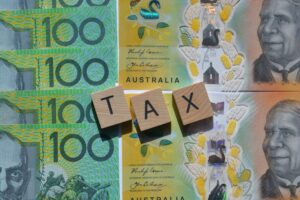Australian Dollar Hits a Five-Year Low: What It Means for Investors
![]() Ujjwal Maheshwari, January 20, 2025
Ujjwal Maheshwari, January 20, 2025
The Australian Dollar (AUD) has, in the recent past, regressed to the lowest level in the last five years, and many are heeding this situation. Any player in the global financial market has several questions and concerns regarding this change: What factors led to it, what effects are possible, and how to operate in such a volatile environment?
These changes are fundamental to know and understand if one is an investor involved with Australia or the Asia-Pacific region. This blog explores what a five-year low for the AUD is, what factors caused it, and how investors can safeguard or profit from these circumstances.
Fluctuation of The Australian Dollar in Recent Period
The Aussie dollar has continued to drop to a rate of 61.44 US cents which is a full US cent lower than the week before. This is down significantly from the end of September when it was slightly over 69 US cents per barrel. This decline has been steeper in terms of the US dollar rather than others such as the euro, yen and baht currencies.
What Might Affect the Aussie Dollar Next?
The fluctuations of the Australian dollar highly depend on the course of US dollars and interests inside the country like interest rates and inflation. If the expectation of cuts in Australian interest rates persists, the Australian dollar is likely to come under more pressure. However, US inflation data and political shifts are some of the global activities that could contribute to increased volatility in the exchange rate in the next one or two weeks.
The Impact on Various Investment Sectors
The more the Australian dollar is volatile, the more interest has to be placed on how various investment sectors will be hit by this fact. Here’s a breakdown of the primary areas that investors should monitor:
- Foreign Exchange Market (Forex): There could, however, be equal risks and rewards in the trading of forex for forex traders. Short traders in the AUD will benefit from the decline of the currency, while long traders can expect to lose money. Foreign investors, especially in US dollars, may also stand to gain by being able to access Australian assets at better exchange rates.
- Australian Stocks and the Share Market: A weaker AUD benefits export-oriented businesses because it reduces their pricing adversity on the global market. For instance, the mining sector may experience higher revenues if there is a high demand for commodities produced in Australia. However, the companies that rely on importing their raw materials may experience increased costs and, therefore, reduced profits.
- Real Estate Market: When the AUD weakens, this encourages foreign investors to purchase Australian property, lifting demand, possibly in Sydney and Melbourne. However, domestic investors may be challenged due to the effects of flare-ups in inflation and resultant higher costs in mortgages needed to drive housing demand.
- International Investment and Bonds: Australian bond investors may experience a depreciation in the value of their investments as interest and principal repayments in foreign currency are adversely affected by general currency depreciation. This could lead to a decline in demand for Australian bonds and thus increase yields.
- Commodities: Australia, being a large exporter of goods and services, enjoys when there is a devaluation of the AUD since this makes its exports cheaper. However, a weakness of the currency can be threatened by lower global commodity prices.
How to cope with the depreciating AUD?
Given the volatility in the currency markets, investors need to consider several strategies to protect and even capitalize on the situation:
- Hedge Currency Exposure: If one is significantly exposed to the Australian dollar, it might be worthwhile to use products such as currency options or forwards. These tools will assist you in reducing exchange rate risk and ‘freezing’ the current rate of the AUD to avoid its decline.
- Focus on Exporters: As mentioned above, industries that export a lot may benefit from a low AUD as mentioned below. Corporate Australia is also a good bet for investing in sectors like mining and energy, agriculture, and tourism. These sectors have better performance when the Australian dollar is low, especially when the global market demand for Australian goods is high.
- Diversify Globally: Some quarters have stated that international diversification still ranks as the best strategy for dealing with risk during changes in currencies. It will make the fluctuations in the value of the currency affect your overall portfolio in a manner that is not as extreme. It may also give exposure to markets that are getting uplift from a stronger currency environment.
- Monitor Central Bank Actions: Make sure you are closely following all the actions of the Reserve Bank of Australia. Any shift in the inflows can be hazardous because movements in interest rates or any change in monetary policy could affect the AUD’s value. ‘The AUD is predicted to improve in the short term with increasing interest rates intensification and to depreciate with decreased interest rates or reduction of interest rates.
Conclusion
The fact that the Australian dollar has been tested as low as it has in the last five years has been very costly to investors. Although the currency’s depreciation raises threats involving the depreciation of currency-valued assets, it has positives on other balances, particularly in sectors that rely on exports in AUD.
They should consider investing in other types of assets and employing currency hedging to prevent further decline. Had it been done with the right strategies in mind, it wouldn’t just be possible to reduce the effects of a struggling AUD but also exploit the constantly shifting currency market. Once again, it will be necessary to inform and actively respond to currency fluctuations to continue creating a favourable investment climate.
What are the Best ASX Stocks to invest in right now?
Check our buy/sell tips
FAQs
- In what way can investors be impacted by a weak Australian dollar?
A depreciated AUD is favourable for exporters as it increases their revenue but unfavourable for importers or foreign borrowing firms. To forex investors, it is a threat and opportunity, as it concerns forex trading.
- Should investors be invested in stocks in Australia now?
Investors might be wise to begin buying Australian stocks if these companies rely principally on exports since the weaker AUD will increase their competitiveness. Investors in firms dependent on importation or having access to foreign credit should be cautious.
- Does depreciation of the AUD affect real estate?
Yes, when the AUD weakens, Australian real estate becomes more affordable to international buyers, boosting demand. However, higher inflation and the cost of mortgages can negatively impact the domestic demand for properties in the country.
- What measures can investors take to avoid exposure to currency risk?
Common ways to minimize fluctuations and risks include diversifying assets by purchasing safe havens such as precious metals or employing hedging tools such as options or futures contracts that change exchange rates.
Blog Categories
Get Our Top 5 ASX Stocks for FY25
Recent Posts
The $3m super tax is coming! If you’re invested in equities, here is how it might impact you
It seems during the next 3 years, the $3m super tax will be officially a thing. Itwas blocked by the…
Northern Star Resources (ASX:NST): The $28bn gold miner that stands above them all
Northern Star Resources (ASX:NST) is by far the largest gold company on the ASX, capped at $28bn as of May…
6 ASX stocks you forgot were listed
Here are 6 ASX stocks you forgot were listed Brisbane Broncos (ASX:BBL) No it is not a mistake. This…



